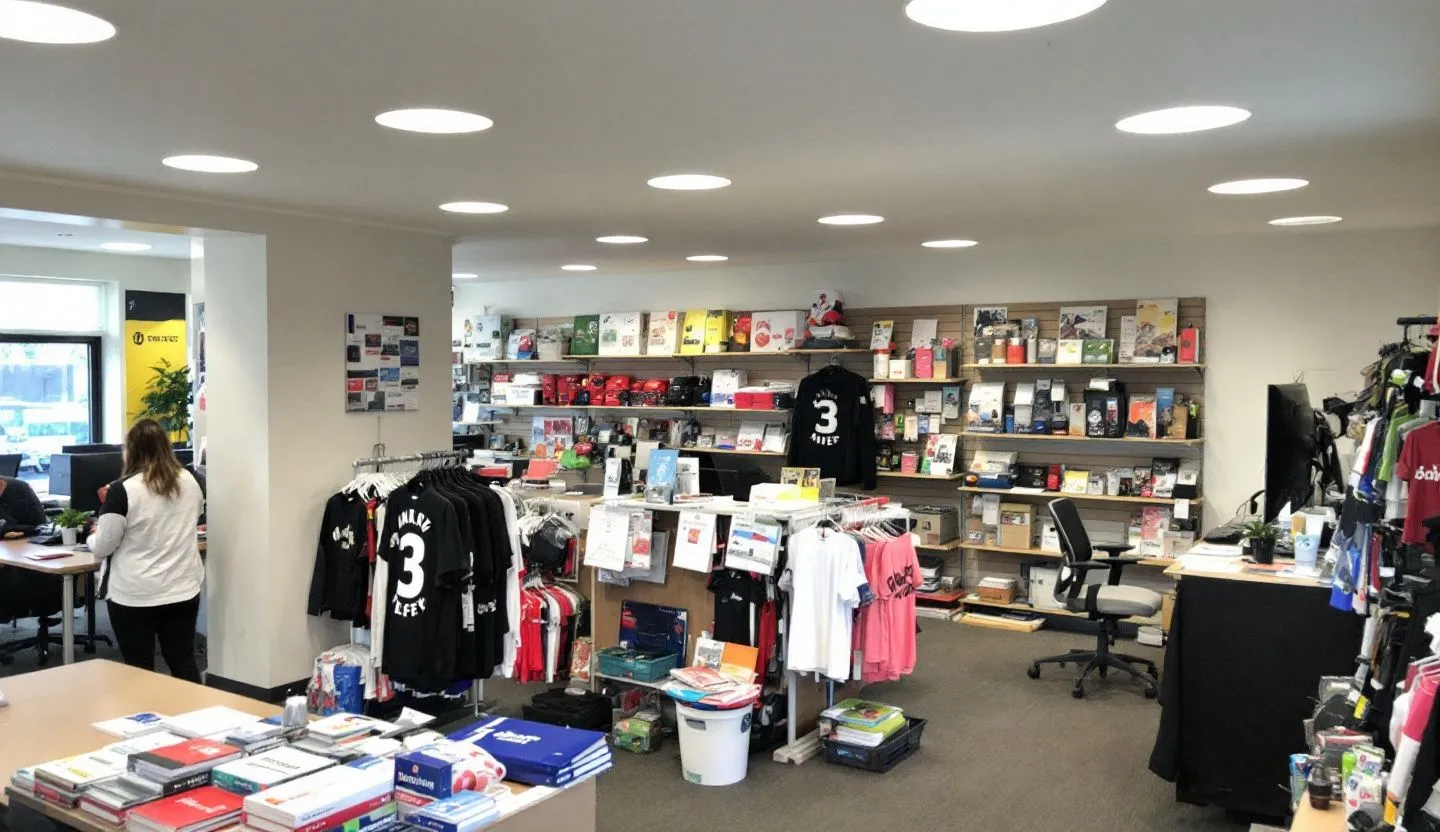How to maintain brand control in a self-service content portal
Brand consistency is a daily struggle for every enterprise marketing leader I know. We want to empower our teams, partners, and sometimes even customers to move fast and produce content on demand, but that speed comes at a cost. The moment we open up access to assets, templates, and creative tools, the risk of off-brand content multiplies. It’s the classic “move fast, break things” dilemma, but with our brand’s reputation at stake. When I talk to other CMOs, Marketing Ops Directors, or even IT leaders, the pain is universal: how do we give teams freedom without losing control?
Let’s get real about the pain
I’ve been there: you invest months,sometimes years,building a brand identity, aligning cross-functional teams, and documenting every nuance from tone of voice to hex codes. Then, a regional sales manager, pressed for time, pulls a logo from an old PowerPoint and slaps it onto a one-pager. Someone in a partner organization crops your imagery to fit a local ad, ignoring safe zones and guidelines. Suddenly, the brand you’ve worked so hard to craft starts to look like a patchwork quilt, and not in a good way.
The pain isn’t just aesthetic. In regulated industries, one off-brand document can trigger compliance nightmares or legal exposure. For global organizations, the stakes are even higher: multiple languages, cultural nuances, and the sheer scale of content production make it harder to maintain brand compliance in self-service portals. And let’s not forget the cost to team morale. Designers and creative leads often find themselves policing minor infractions instead of doing the strategic work they were hired for.
Why the shift to self-service is accelerating
Despite the risks, the self-service content portal isn’t going anywhere. In fact, it’s becoming a strategic necessity. The need for speed-to-market is relentless, and distributed teams,whether in sales, partner management, or regional marketing,can’t afford to wait days for assets or approvals. The pressure to personalize content for every audience, segment, or geography only intensifies the demand for self-serve capabilities.
At the same time, technology has changed the rules. Today’s enterprise platforms promise secure, integrated, and scalable solutions that put creative power in the hands of non-designers. IT and operations leaders are actively searching for tools that balance agility with governance. CIOs, CTOs, and even legal and risk teams are now stakeholders in the content supply chain, ensuring systems are compliant, data is secure, and brand standards are enforceable.
But with great power comes greater risk. The more you democratize content creation, the more potential there is for brand drift. The challenge is designing a self-service portal that accelerates execution without sacrificing consistency, control, or compliance.
The foundation: building guardrails, not roadblocks
The best self-service portals don’t just dump assets in a folder and hope for the best. They’re carefully designed to guide, educate, and even gently nudge users toward brand compliance in self-service portals. Think of them as the rumble strips on a highway: you can move fast, but if you start to veer off course, you’ll know right away.
Guardrails start with up-to-date, accessible brand guidelines that are baked directly into the portal. But that’s just table stakes. The real magic happens when you embed brand controls into the templates themselves. Locking logos, colors, and fonts isn’t about restricting creativity,it’s about freeing up teams to focus on messaging and relevance, not worrying about whether they’ve chosen the right shade of blue.
Take an enterprise B2B tech company I worked with: they migrated from a static asset library to a dynamic, template-driven portal. By embedding design tokens, pre-approved imagery, and copy blocks right into the templates, they reduced off-brand content by 80% in six months. The sales team loved it because they could customize decks and one-pagers without waiting for creative approval, and the brand team finally got their nights and weekends back.
Governance meets flexibility: workflow is your friend
Brand control isn’t just about locking things down. It’s about enabling the right kind of flexibility, with the right checks in place. This is where workflow management comes in,a topic that sometimes scares people off because it sounds bureaucratic. But in practice, it’s one of the most effective tools for maintaining brand compliance in self-service portals.
A good workflow doesn’t slow people down; it guides them. For example, you can set up tiered approval processes based on risk or complexity. Maybe a local marketing manager can publish a social graphic without review, but any asset that includes legal disclaimers or targets a regulated industry must be routed through compliance. You can even automate reminders for periodic review of evergreen content, ensuring nothing outdated slips through the cracks.
We saw this in action at a global financial services firm. Their portal included automated workflows that routed high-risk content to legal and compliance teams, while low-risk materials were auto-approved. The result: faster turnaround for routine assets, but zero tolerance for regulatory missteps. Everyone knew where the guardrails were, and brand compliance became part of the culture, not just a box to check.
The power of permissioning: not all users are created equal
One of the most powerful, yet underutilized, features of modern self-service portals is granular permissioning. Let’s face it: not everyone needs access to everything. By creating user roles and permissions that reflect your org chart, regional needs, or partner tiers, you can dramatically reduce the risk of brand drift.
For example, a national retail chain with hundreds of locations used to struggle with store managers creating their own flyers and signage. After moving to a self-service portal with role-based permissions, only approved users could edit templates, while others could customize certain fields (like store hours or event dates) without touching the brand elements. The result: consistent branding across thousands of assets, with local teams still feeling empowered to make updates that mattered to their market.
Permissioning also supports compliance. You can restrict access to sensitive content, ensure only trained users can modify regulated materials, and automatically provision or deprovision users as teams change. For IT and operations leaders, this level of control is non-negotiable, especially in industries with strict data security requirements.
Education is continuous: make learning part of the workflow
No matter how good your technology is, people will always be your biggest variable. That’s why ongoing education is essential for maintaining brand compliance in self-service portals. But let’s be honest: no one wants to read a 50-page PDF before they can download a logo.
The most successful organizations build learning into the portal experience itself. Inline tooltips, short explainer videos, and context-sensitive guidance can help users understand not just the “what” but the “why” of brand standards. Some portals even include built-in quizzes or certifications, rewarding users for mastering the basics.
At a global CPG company, we rolled out a “Brand Champion” program tied to the portal. Users earned badges for completing short training modules, and those with higher scores unlocked advanced features. This gamified approach turned compliance from a chore into a point of pride, and engagement with brand resources skyrocketed.
The next-gen DAM for enterprise
Get more than just storage. Get the DAM that dramatically improves content velocity and brand compliance.Automation and intelligence: let the system do the heavy lifting
Automation isn’t just about speed,it’s about reducing human error. Today’s enterprise-grade self-service portals increasingly leverage AI and smart automation to flag potential issues before they go live. That might mean real-time feedback when someone tries to use an outdated logo, or automated resizing to ensure social graphics meet platform requirements.
One insurance brand I worked with implemented AI-powered brand compliance checks right inside their portal. If a user uploaded an image that didn’t match approved color palettes or tried to edit locked copy, the system would prompt them with corrective suggestions. Over time, the number of violations dropped, and the brand team could focus on higher-impact work.
Automation also helps with reporting and auditing. You can track who created what, when, and where it was used, making it easier to spot trends, identify training needs, or quickly pull content if something changes (think: a new legal disclaimer or product recall). For compliance officers and legal teams, this level of visibility is a game-changer.
Integrations and interoperability: one source of truth, everywhere
Brand control falls apart when content lives in silos. The more systems your teams use,DAMs, CMSs, CRM tools, marketing automation,the greater the risk of outdated or off-brand assets creeping in. The solution is integration: connecting your self-service content portal to the broader enterprise tech stack.
Seamless integrations ensure that only the latest, approved assets are available wherever teams work. For instance, a multinational pharmaceutical company integrated their portal with their DAM, CRM, and legal approval systems. Now, when a field rep pulls a brochure from Salesforce, they know it’s on-brand and up-to-date. No more rogue assets floating around in email attachments or local drives.
Integrations also support data-driven decision-making. By connecting the portal to analytics platforms, you can track usage patterns, measure compliance rates, and identify high-performing content. This feedback loop helps brand leaders continuously refine guidelines and templates based on what’s working in the real world.
The human element: culture is your ultimate safeguard
Technology can solve a lot, but culture is what sustains brand compliance in self-service portals over the long haul. When people understand why brand consistency matters,how it drives trust, loyalty, and even sales,they become partners in the process, not obstacles.
At a fast-growing fintech company, we made brand storytelling part of onboarding for every employee, not just marketers. We shared examples of great (and not-so-great) executions, celebrated teams that went above and beyond, and created a Slack channel where people could ask branding questions in real time. The result: fewer mistakes, faster adoption of new assets, and a sense that everyone owned the brand, not just the creative team.
Culture also means making it safe to raise issues. If someone spots an off-brand asset in the wild, they should feel empowered to flag it,without fear of blame. This creates a feedback loop that surfaces gaps in your process or portal, making continuous improvement possible.
Measuring success: what great looks like
So how do you know if you’ve achieved brand compliance in self-service portals? It’s not just about fewer mistakes,it’s about enabling teams to move faster, with confidence. Look for these indicators:
- Brand consistency across all channels and geographies: Assets look and feel the same, no matter who created them or where they’re used. This signals that your portal’s guardrails are working.
- Speed-to-market without sacrificing quality: Teams can create and deploy content quickly, but nothing goes live without meeting brand and compliance standards.
- Reduced burden on creative and compliance teams: Fewer one-off requests, less manual policing, and more time spent on strategic work.
- High adoption and satisfaction rates: Users actually prefer the self-service portal because it makes their jobs easier, not harder.
- Robust reporting and audit trails: You can prove compliance to regulators, auditors, or the C-suite with confidence.
Real-world example: scaling brand compliance in a global franchise network
Let’s take a look at a real scenario. A global restaurant franchise with thousands of locations faced a classic challenge: local managers needed to customize menus, signage, and promotions, but every deviation risked brand dilution and, in some cases, regulatory violations around food labeling.
They implemented a self-service content portal with the following features:
- Role-based access: Franchisees could personalize certain fields (like pricing or local specials), but core brand elements were locked.
- Dynamic templates: All creative assets pulled from a central library, ensuring every logo, font, and image was current.
- Automated compliance checks: Any asset referencing nutritional info or legal disclaimers was automatically routed to compliance for review.
- Integrated learning: Short videos and tooltips explained why certain elements couldn’t be changed, building empathy and understanding.
The outcome? Brand compliance in self-service portals skyrocketed. Field teams moved faster, local promotions were more relevant, and compliance issues dropped by 70%. The franchise’s creative team reported a 50% reduction in manual review requests, freeing them to focus on larger brand campaigns.
Practical steps for getting started
- Audit your current state: Start by mapping out where brand compliance breaks down today. Look for patterns in off-brand content, bottlenecks in asset delivery, or recurring compliance issues.
- Engage cross-functional partners: Bring IT, compliance, legal, and regional stakeholders into the conversation early. Their needs and concerns will shape your requirements and help avoid surprises down the line.
- Define your guardrails: Be clear about which brand elements are non-negotiable and which can be customized. This sets expectations and informs your template and permissioning strategy.
- Choose the right technology: Look for enterprise-grade solutions that offer robust permissioning, workflow automation, integrations, and reporting. Prioritize usability,if the portal isn’t intuitive, adoption will suffer.
- Invest in education and culture: Don’t treat brand training as a one-and-done event. Build learning into your portal, celebrate great executions, and create channels for ongoing feedback.
- Measure, iterate, and improve: Use analytics to track adoption, compliance rates, and content performance. Be ready to update templates, guidelines, or workflows based on what you learn.
Future trends: AI, localization, and personalization
The world of brand compliance in self-service portals is only getting more complex. As organizations push for more localized and personalized content, the risk of off-brand or non-compliant assets grows. But new technologies are rising to meet the challenge.
AI-powered design assistants are starting to offer real-time suggestions, flagging potential issues before they become problems. Machine learning can analyze usage patterns to identify gaps in training or template coverage. And advanced localization tools can ensure that translations, imagery, and cultural references align with both brand standards and local norms.
The next frontier is true personalization at scale,where every user, whether they’re in marketing, sales, or operations, gets a portal experience tailored to their role, market, and skill level. The goal: make it easier than ever to do the right thing, every time.
The risk of standing still
If there’s one thing I’ve learned, it’s that brand compliance in self-service portals is not a “set it and forget it” problem. As your business evolves, so do your risks, needs, and opportunities. The worst thing you can do is treat your portal as a static asset.
Instead, approach it as a living system. Continually audit, refine, and evolve your processes and technology. Listen to your users,they’re the first to spot friction or gaps. And never lose sight of the bigger picture: your brand is one of your most valuable assets, and protecting it is everyone’s job.
Brand compliance in self-service portals is a balancing act that every enterprise leader must master. The pressure to move quickly and empower distributed teams is only increasing, but so is the scrutiny on brand consistency and regulatory adherence. By building thoughtful guardrails into your portal, integrating workflow and automation, and fostering a culture of continuous learning, you can enable speed and scale without losing control. The right combination of technology and human touch transforms your portal from a risk to an asset, empowering everyone to deliver on-brand, compliant content with confidence.
The organizations that get this right don’t just avoid costly mistakes,they unlock new levels of agility, creativity, and trust across their teams. They make brand compliance second nature, not an afterthought. Whether you’re rolling out a new portal or optimizing an existing one, remember that this is a journey, not a destination. With the right strategy, your self-service content portal can become a catalyst for growth, innovation, and brand excellence in every market you serve.







